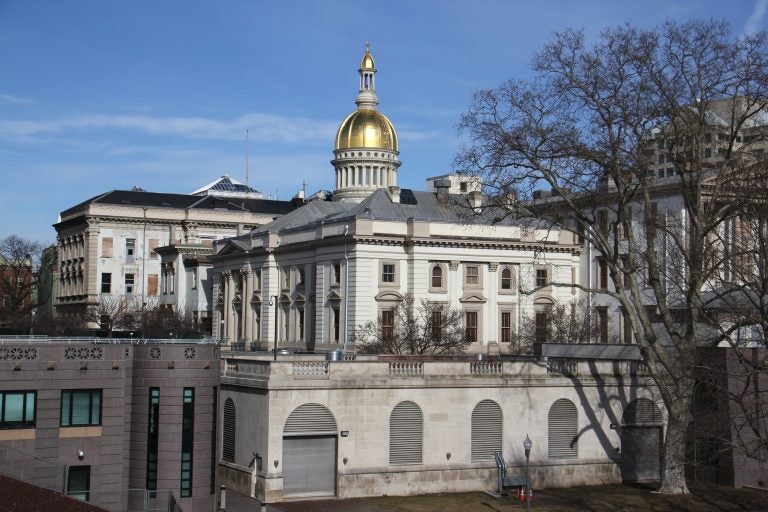‘There’s not a chance’: New Jersey redistricting possible but unlikely in 2021
A New Jersey constitutional amendment approved by voters in November dictates that if the state does not receive U.S. Census data by Feb. 15, it will delay redistricting.

New Jersey Statehouse in Trenton. (Emma Lee/WHYY)
A New Jersey constitutional amendment approved by voters in November dictates that if the state does not receive U.S. Census data by Feb. 15, it will delay redistricting.
The state Senate’s top Democrat now believes that is the most likely outcome.
“I’d prefer to do it now, to be honest with you. I would rather do the redistricting now. But the reality is there’s not a chance,” said Senate President Steve Sweeney.
New Jersey typically receives census data a little early after each decennial survey so it can redraw legislative maps in time for its odd-year state elections. In 2021, the governor and all members of the legislature are on the ballot.
But the U.S. Census Bureau has said issues caused by the coronavirus pandemic will likely delay the delivery of data to states, and the Trump administration has indicated it will not send it to New Jersey earlier, Sweeney said.
“Because the federal government wouldn’t cooperate with us, it made it almost impossible for us to get it done in time,” Sweeney said. He added that the state would be ready to get to work if it did receive the information by the February deadline.
Virginia — the other state with major statewide odd-year elections — is forming a redistricting commission and still plans to redraw its legislative maps in time for the 2021 contests.
Jesse Burns, executive director of the League of Women Voters of New Jersey, which opposed the constitutional amendment, said Virginia’s example shows it would have been possible for New Jersey to redraw its maps next year — even with a delay.
“We’ve received that data past Feb. 15 before, and we’ve had to move the primary just slightly to accommodate for it,” she said.
Burns and other good-government advocates note that New Jerseyans have moved around the state over the last decade, and that the state’s Latino and Asian populations have grown by 20%. They suggest the old maps, last redrawn in 2011, need an update sooner rather than later.
“What we have for [the next] two years now is a map that does not reflect ‘one person, one vote,’ where folks are getting their rightful representation in the legislature,” she said.
WHYY is your source for fact-based, in-depth journalism and information. As a nonprofit organization, we rely on financial support from readers like you. Please give today.





